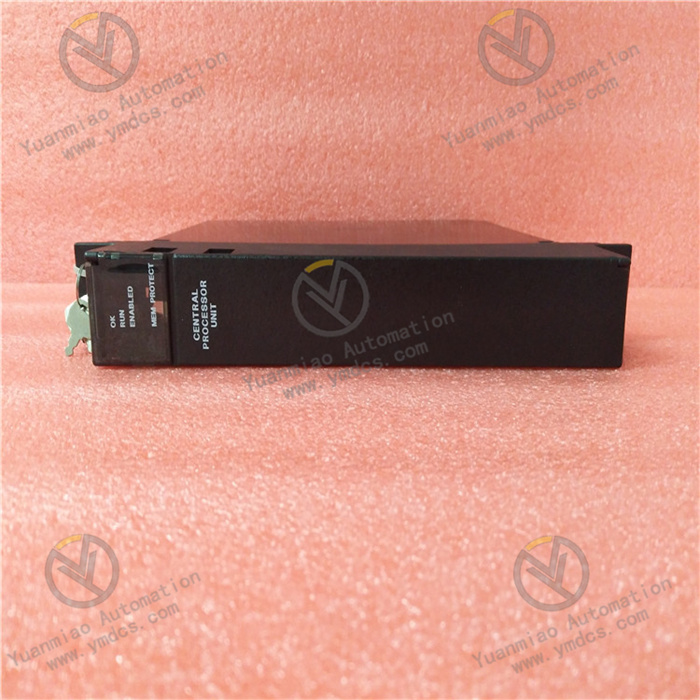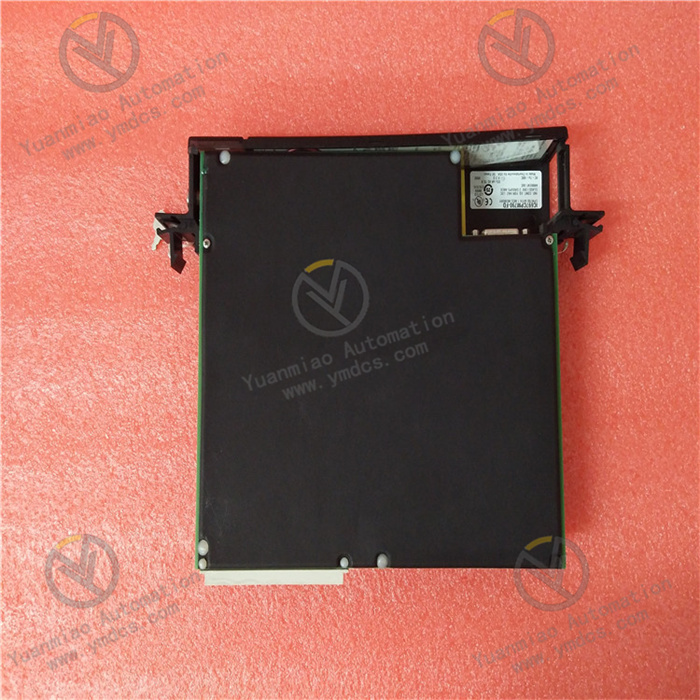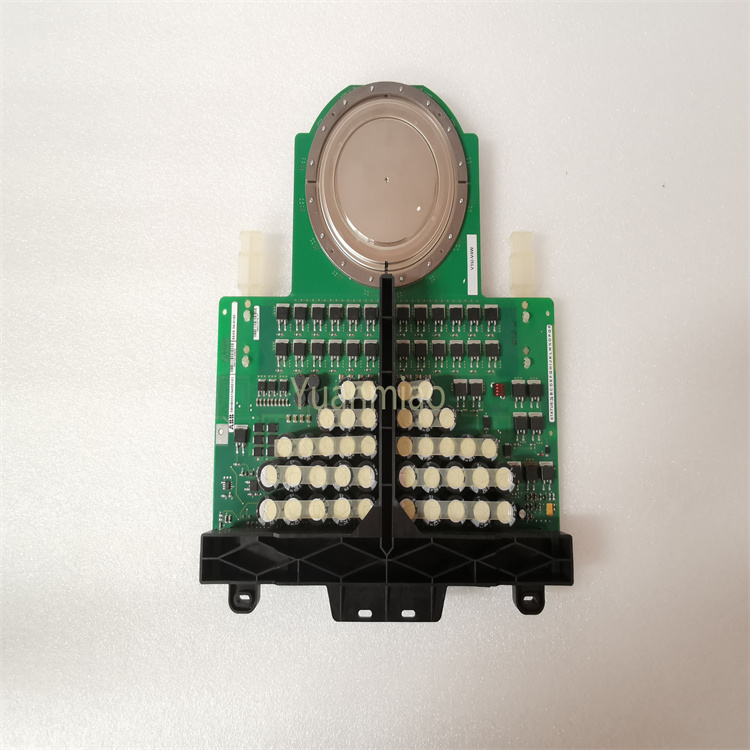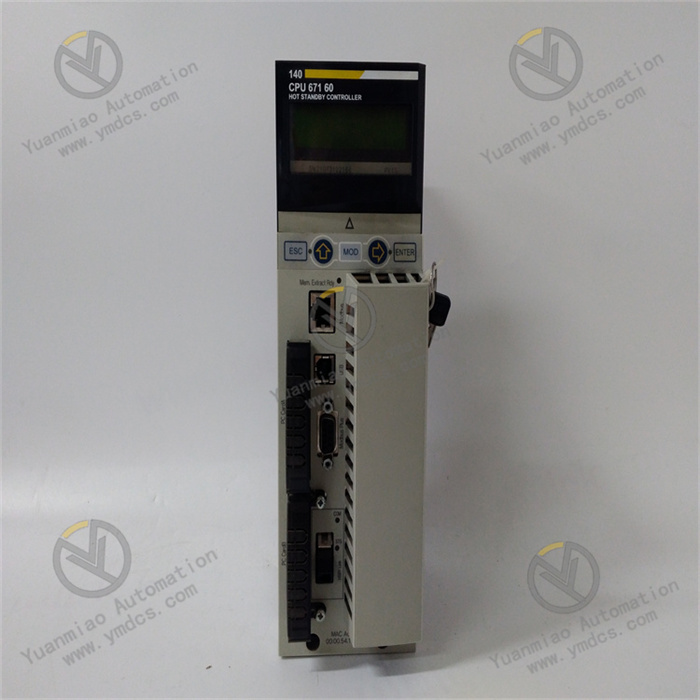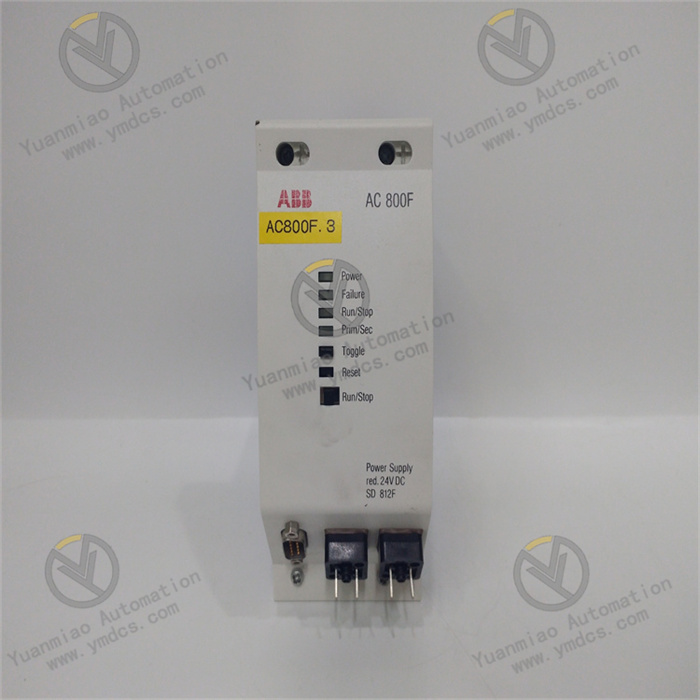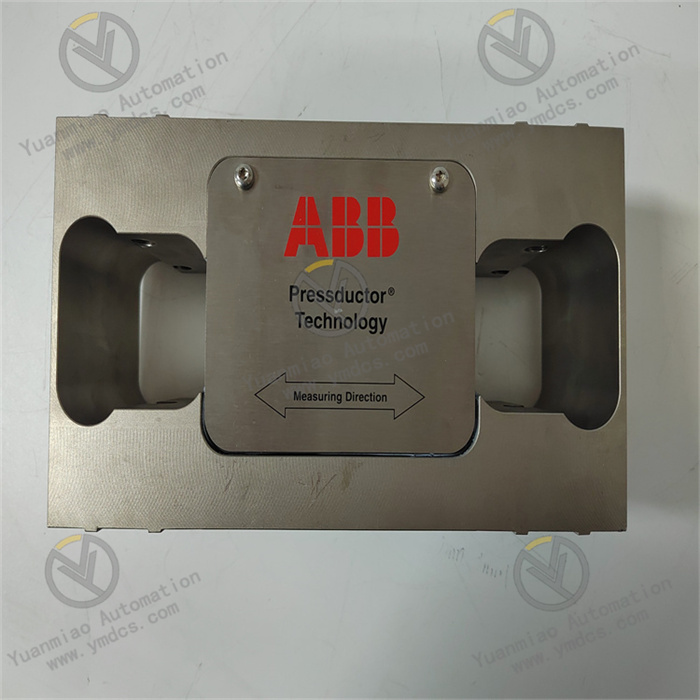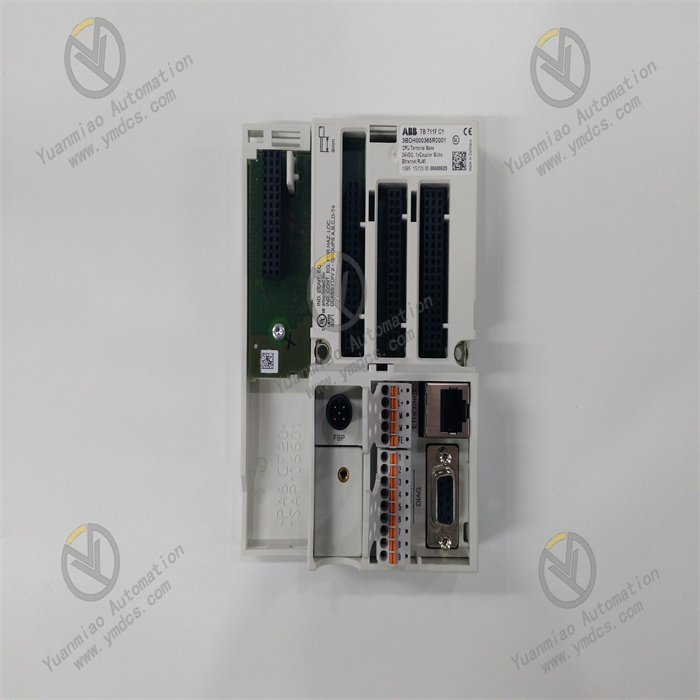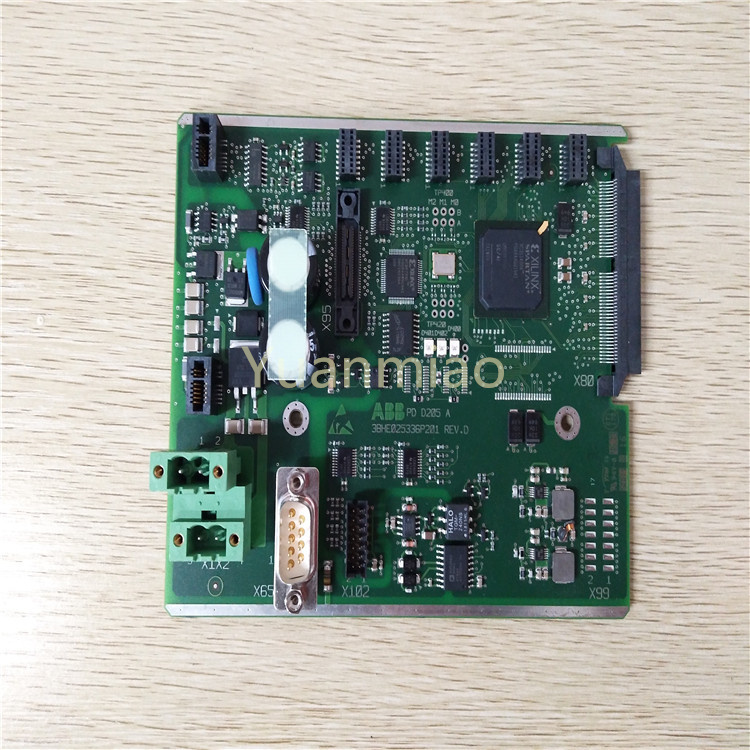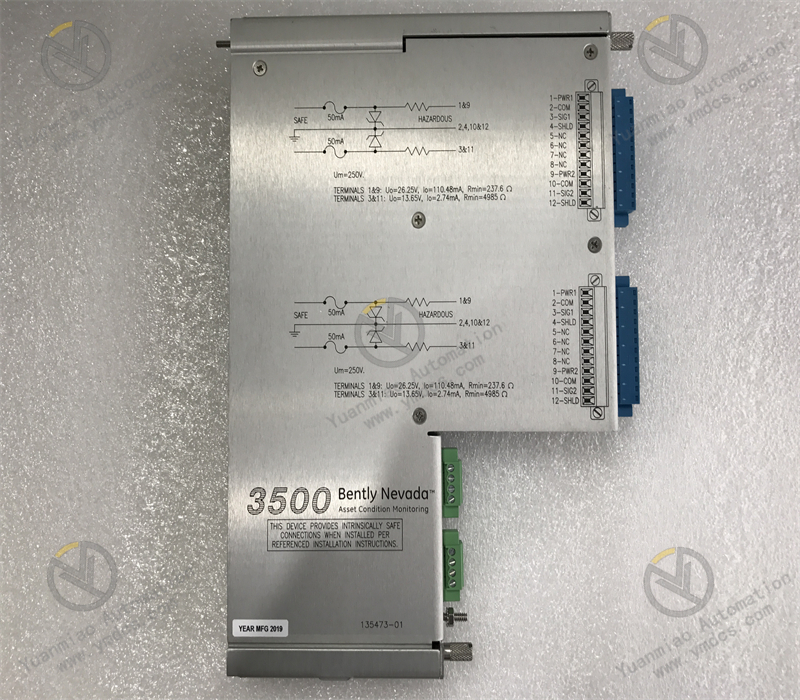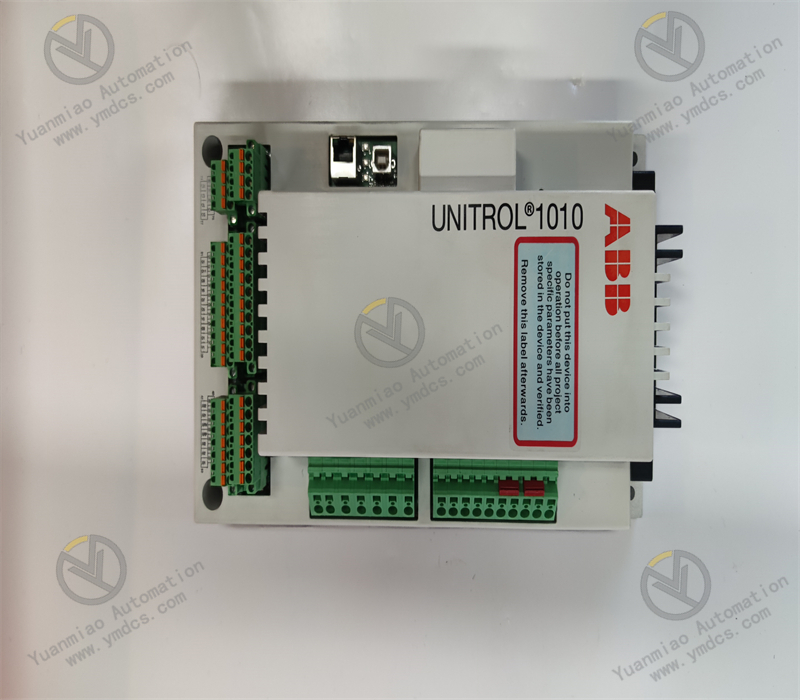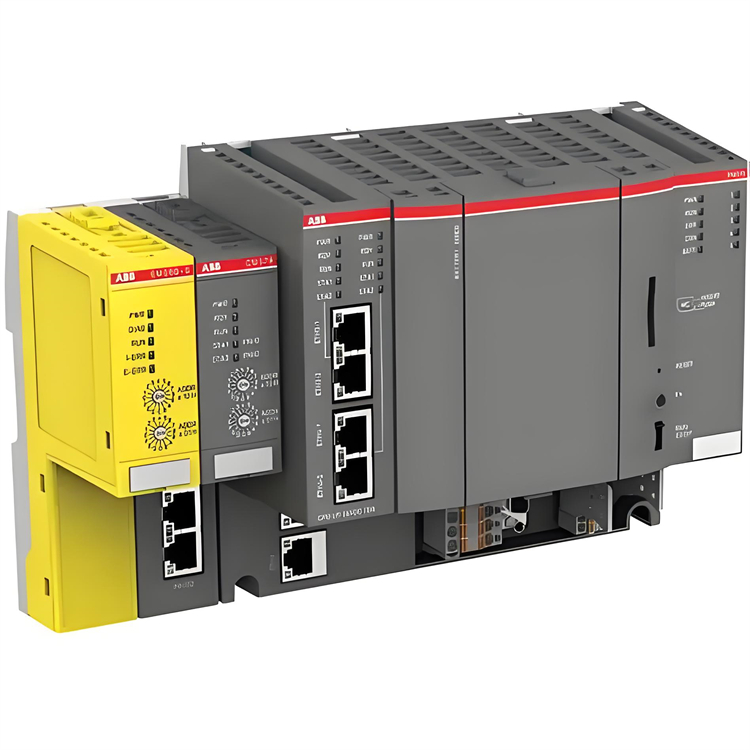Description
GE Fanuc IC697CPM790-FD
I. Overview
The GE Fanuc IC697CPM790-FD is a Central Processing Unit (CPU) module for Programmable Logic Controllers (PLCs), belonging to the GE 90-70 series PLC product family. Its core positioning is to address the key requirements of large-scale industrial automation systems, including "multi-task parallel processing, complex control logic calculation, massive data interaction, and stable operation in harsh environments". It provides an integrated "control core - data interaction - fault tolerance" solution for large-scale production lines (such as vehicle final assembly lines, large-scale refining and chemical units, and DCS auxiliary control systems in thermal power plants) in industries like power generation, petrochemicals, metallurgy, and smart manufacturing. This ensures the long-term and reliable operation of the system under high-load, strong-interference, and continuous production scenarios, while improving the automation level and production efficiency of industrial production.
In vehicle final assembly lines, this CPU module can simultaneously process the control logic of 32 assembly stations (e.g., vehicle body positioning, bolt tightening, glue application inspection, and conveyor line scheduling), support real-time data interaction for over 1,000 I/O points, and achieve a control cycle of ≤1ms. This ensures precise coordination of actions at each station, with a stable production cycle of 60 seconds per vehicle (compared to ≥90 seconds per vehicle for traditional CPU modules). In 1 million ton/year ethylene units in the petrochemical industry, it can realize cascade control of "temperature-pressure-flow" for more than 20 reaction units, support real-time data sharing with DCS systems (e.g., ABB 800xA), and achieve a fault response time of ≤10ms, avoiding process fluctuations caused by control delays. In the auxiliary equipment control systems of thermal power plants (e.g., feedwater pumps, circulating water pumps, and condensers), it can simultaneously run 8 sets of independent PID control algorithms and support redundant configuration. When the main CPU fails, the standby CPU switches without interruption (switching time ≤50ms), ensuring the uninterrupted operation of the auxiliary equipment system and the stable power generation of the generator set.
The IC697CPM790-FD adopts an industrial-grade modular architecture with dimensions of 160mm×120mm×40mm. It is compatible with standard GE 90-70 series racks (10-slot/16-slot) and supports parallel expansion of multiple CPUs (up to 4 CPUs), meeting the distributed control needs of large-scale systems. The CPU core uses a 32-bit RISC processor (with a main frequency of 500MHz) and is paired with a high-speed FPGA (Field-Programmable Gate Array) for real-time logic processing, achieving a computing performance of 100k steps/ms (Ladder Diagram, LD) and 200k steps/ms (Structured Text, ST). The housing is made of UL94 V-0 grade flame-retardant alloy material with an IP20 protection rating, which can resist dust and slight moisture erosion in industrial sites. It has an operating temperature range of -40℃ to 70℃ and a relative humidity of 5% to 95% (non-condensing), making it compatible with low-temperature outdoor control cabinets and high-temperature workshop equipment cabinets. Internally, it adopts a three-module independent isolation design of "core computing - data caching - communication interface", combined with multi-layer electromagnetic shielding technology, which effectively reduces electromagnetic interference in industrial sites (e.g., high-frequency noise generated by frequency converters) and ensures computing accuracy and communication stability. It supports 1:1 hot standby redundant configuration, with a Mean Time Between Failures (MTBF) of ≥250,000 hours (per Telcordia standard at 25℃), meeting the "long-cycle, low-maintenance" operation requirements of industrial systems. Additionally, it is compatible with GE CIMPLICITY HMI software and third-party SCADA systems (e.g., Siemens WinCC), and supports mainstream industrial protocols such as Modbus TCP and EtherNet/IP, reducing the difficulty of system integration.
II. Technical Parameters
1. Core Computing Parameters
| Parameter Category | Specific Specifications |
|---|---|
| CPU Core | 32-bit RISC processor with a main frequency of 500MHz; paired with Xilinx Spartan-6 FPGA (30k logic units) for real-time logic acceleration |
| Computing Performance | Ladder Diagram (LD): 100k steps/ms; Structured Text (ST): 200k steps/ms; Function Block Diagram (FBD): 150k steps/ms |
| Program Storage | 128MB Flash (for user program storage), supporting program encryption (AES-128 algorithm); 512MB DDR3 SDRAM (for running memory) |
| Control Cycle | Minimum control cycle: 1ms (configurable to 5ms/10ms/20ms); supports task priority scheduling (8 levels of priority) |
| Maximum I/O Capacity | Supports local I/O: 4,096 points (digital)/512 points (analog); remote I/O: 16,384 points (expanded via EtherNet/IP) |
2. Communication Parameters
| Parameter Category | Specific Specifications |
|---|---|
| Built-in Communication Interfaces | 2 industrial Ethernet ports (EtherNet/IP, 100Mbps, full-duplex), supporting TCP/IP, UDP, and Modbus TCP protocols; 1 RS485 port (Modbus RTU, 9600-115200bps); 1 GE dedicated backplane bus (100MB/s, for data interaction between modules) |
| Expandable Communication Interfaces | Supports expansion of Profinet IRT interface via IC697BEM731 module; supports expansion of DeviceNet interface via IC697BEM732 module |
| Data Synchronization | Supports IEEE 1588 PTPv2 precise time synchronization (accuracy ±1μs); supports real-time data synchronization with remote I/O modules (delay ≤100μs) |
| Communication Distance | Ethernet: CAT5e cable ≤100 meters, single-mode optical fiber (optional) ≤2km; RS485: shielded twisted pair ≤1,200 meters |
3. Redundancy and Fault Tolerance Parameters
| Parameter Category | Specific Specifications |
|---|---|
| Redundancy Configuration | Supports 1:1 hot standby redundancy (main and standby CPUs run synchronously); redundancy switching time ≤50ms (from fault detection to standby CPU takeover) |
| Data Synchronization | Real-time data synchronization between main and standby CPUs (cycle 1ms), supporting full synchronization of programs, configuration parameters, and I/O status; synchronization medium: redundant Ethernet or dedicated synchronization cable |
| Fault Detection | Supports real-time fault detection of CPU core, memory, communication interfaces, and power supply voltage; diagnostic coverage ≥99%; fault alarm methods: red LED indicator, communication message, HMI pop-up window |
| Fault Tolerance Function | Supports I/O module fault tolerance (e.g., if a digital input channel fails, the channel is automatically shielded without affecting other channels); supports communication link redundancy (dual Ethernet links, automatic switching in case of failure) |
4. Environmental and Reliability Parameters
| Parameter Category | Specific Specifications |
|---|---|
| Operating Temperature | -40℃~70℃ (wide-temperature design, fanless heat dissipation, relying on natural heat dissipation of the housing) |
| Storage Temperature | -55℃~85℃ |
| Relative Humidity | 5%~95% (non-condensing), complying with IEC 60068-2-38 humidity cycle standard |
| Electromagnetic Compatibility | Emission: EN 55022 Class A; Immunity: EN 55024 (EFT ±2kV, surge ±4kV at power port, RF radiation 10V/m) |
| Mechanical Performance | Vibration: IEC 60068-2-6 (10-500Hz, 2g, 2 hours per axis); Shock: IEC 60068-2-27 (15g, 11ms) |
| Mean Time Between Failures (MTBF) | ≥250,000 hours (per Telcordia standard at 25℃) |
III. Functional Characteristics
1. High-Performance Multi-Task Parallel Processing
With "high computing power and fast response" as its core, the IC697CPM790-FD realizes efficient parallel processing of multiple tasks in large-scale industrial systems through the collaboration of a 32-bit RISC processor and FPGA:
- Superior Computing Power: The 500MHz RISC processor, paired with FPGA acceleration, achieves a ladder diagram computing speed of 100k steps/ms, which is 5 times faster than traditional 16-bit CPUs (e.g., IC693CPU363). In vehicle final assembly lines, it can simultaneously run the control logic of 32 stations (including over 10,000 ladder diagram steps) with a control cycle of 1ms, ensuring the synchronization accuracy of actions such as vehicle body positioning, bolt tightening, and glue application is ≤10ms. This shortens the production cycle from 90 seconds per vehicle to 60 seconds per vehicle, increasing annual output by 50,000 units.
- Multi-Task Priority Scheduling: It supports 8 levels of task priority (level 0 is the highest, level 7 is the lowest). Critical tasks (e.g., emergency shutdown interlock) can be set to high priority, while non-critical tasks (e.g., data logging) can be set to low priority, ensuring critical control logic is executed first. In ethylene units in the petrochemical industry, the "reactor overpressure interlock" is set to priority level 0 with a response time of ≤1ms, avoiding interlock delays caused by task preemption.
- Massive I/O Data Processing: It supports 4,096 local digital I/O points/512 local analog I/O points, and can be expanded to 16,384 remote I/O points via EtherNet/IP with a data refresh cycle of ≤10ms. In the rolling mill control system of large metallurgical plants, it can real-time collect signals from over 1,000 sensors (e.g., roll temperature, steel plate thickness, rolling force) and output over 800 control commands (e.g., roll speed adjustment, rolling reduction control), ensuring rolling accuracy of ±0.1mm.
2. Highly Reliable Redundancy and Fault Tolerance Design
To meet the "uninterruptible" operation requirements of large-scale industrial systems, the module maximizes system availability through 1:1 hot standby redundancy and multi-layer fault tolerance design:
- Seamless Hot Standby Redundancy: The main and standby CPUs run synchronously, with real-time synchronization of programs, I/O status, and intermediate variables (synchronization cycle 1ms). When the main CPU detects a fault (e.g., core chip failure, communication interruption), the standby CPU takes over control without interruption within 50ms, and there is no fluctuation in I/O output status during the switching process. In the feedwater pump control system of thermal power plants, if the main CPU fails, the standby CPU switches quickly, resulting in a feedwater pump speed fluctuation of ≤1%, avoiding furnace flameout caused by boiler feedwater interruption.
- Full-Link Fault Detection: It has a built-in hardware-level fault diagnosis unit that real-time monitors key components such as the CPU core, memory, communication interfaces, and power supply voltage, with a diagnostic coverage of ≥99%. When an Ethernet interface fault is detected, it immediately switches to the standby Ethernet link and issues a "communication link fault" alarm via the HMI. When a memory error is detected, it automatically activates the standby memory area to ensure normal program operation and avoid system shutdown.
- I/O Module Fault Tolerance: It supports fault shielding and redundant configuration of I/O modules. If a digital input module fails, the system automatically shields all channels of the module and activates the corresponding channels of the standby module. For critical analog signals (e.g., reactor temperature), 2 sensors can be configured to collect the same parameter. The CPU automatically compares the two signals; if the deviation exceeds 5%, it triggers an alarm and outputs the average value, ensuring control accuracy is not affected by the failure of a single sensor.
3. Flexible Communication and System Integration
Through rich communication interfaces and protocol support, it enables efficient integration with multi-brand and multi-type devices, adapting to complex industrial automation networks:
- Multi-Protocol Compatibility: It has built-in support for protocols such as EtherNet/IP, Modbus TCP/RTU, and can be expanded to support Profinet IRT and DeviceNet protocols, making it compatible with devices from brands like GE, Siemens, Rockwell, and ABB. In the automation system of large chemical parks, the IC697CPM790-FD connects to Rockwell frequency converters via EtherNet/IP, to ABB DCS via Modbus TCP, and to Siemens sensors via Profinet IRT, realizing integrated "multi-brand device - single CPU control" and avoiding "information silos" caused by protocol incompatibility.
- Precise Time Synchronization: It supports the IEEE 1588 PTPv2 protocol, achieving time synchronization accuracy of ±1μs with I/O modules, HMIs, and SCADA systems in the system, ensuring the consistency of timestamps for distributed data. In power quality monitoring of power systems, it enables synchronous collection of voltage and current signals in different regions, providing an accurate time reference for power factor calculation and fault recording, with a fault location error of ≤1ms.
- Remote Monitoring and Debugging: It supports remote monitoring (e.g., real-time viewing of I/O status, modifying control parameters) and online debugging (e.g., program downloading, variable monitoring) via GE CIMPLICITY HMI software, eliminating the need for on-site operations. In wind farms in remote areas, operation and maintenance personnel can update the CPU module program and troubleshoot faults via a remote network, reducing the frequency of on-site inspections and lowering operation and maintenance costs.
4. Wide Environmental Adaptability and Long-Term Reliability
Targeting the operating conditions of "extreme temperatures, strong electromagnetic interference, and high vibration" in industrial sites, the module ensures long-term stable operation through reinforced hardware design:
- Wide Temperature Range and Vibration Resistance: With a wide operating temperature range of -40℃ to 70℃, the CPU module can operate stably without performance degradation in outdoor photovoltaic inverter control cabinets (-30℃) in northern winters or rolling mills (65℃) in southern summers. It has a vibration resistance rating of 2g (10-500Hz) and can operate continuously for 1 year without loosening or failure in the control system of mining crushers with severe vibration, meeting the ISO 16750-3 mechanical load standard.
- Strong Electromagnetic Interference Suppression: It complies with the EN 55024 immunity standard, with ESD protection of ±8kV, EFT protection of ±2kV, and can operate normally in an environment with RF radiation of 10V/m. In automobile welding workshops, high-frequency radiation (10-300MHz) generated by 20 surrounding welding robots does not affect the computing and communication of the CPU module, resulting in a control logic execution error of ≤0.1%.
- Long-Life Components: It uses industrial-grade long-life components (e.g., CPU chip service life ≥10 years, capacitor service life ≥8,000 hours @105℃) with an MTBF of ≥250,000 hours. In the auxiliary control system of nuclear power plants, it can operate continuously for 20 years without failure, meeting the "high reliability and long cycle" operation requirements of nuclear facilities.


